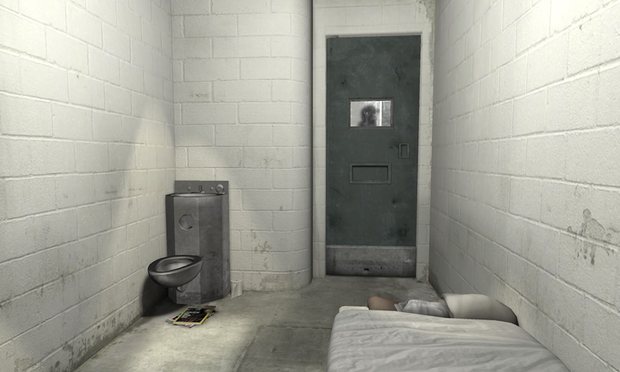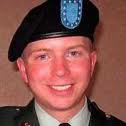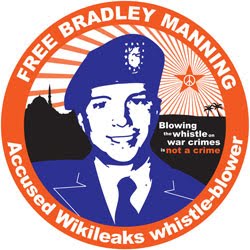Solitary Confinement Is ‘No Touch’ Torture, And It Must Be Abolished
MILITARISM, 9 May 2016
Chelsea E Manning – The Guardian
I spent about nine months in an isolated cell behind a one-way mirror. It was cruel, degrading and inhumane.
3 May 2016 – Shortly after arriving at a makeshift military jail, at Camp Arifjan, Kuwait, in May 2010, I was placed into the black hole of solitary confinement for the first time. Within two weeks, I was contemplating suicide.
After a month on suicide watch, I was transferred back to US, to a tiny 6 x 8ft (roughly 2 x 2.5 meter) cell in a place that will haunt me for the rest of my life: the US Marine Corps Brig in Quantico, Virginia. I was held there for roughly nine months as a “prevention of injury” prisoner, a designation the Marine Corps and the Navy used to place me in highly restrictive solitary conditions without a psychiatrist’s approval.
For 17 hours a day, I sat directly in front of at least two Marine Corps guards seated behind a one-way mirror. I was not allowed to lay down. I was not allowed to lean my back against the cell wall. I was not allowed to exercise. Sometimes, to keep from going crazy, I would stand up, walk around, or dance, as “dancing” was not considered exercise by the Marine Corps.

‘For 17 hours a day, I sat directly in front of at least two Marine Corps guards seated behind a one-way mirror. I was not allowed to lay down. I was not allowed to lean my back against the cell wall.’ Photograph: Ed Thomas
To pass the time, I counted the hundreds of holes between the steel bars in a grid pattern at the front of my empty cell. My eyes traced the gaps between the bricks on the wall. I looked at the rough patterns and stains on the concrete floor – including one that looked like a caricature grey alien, with large black eyes and no mouth, that was popular in the 1990s. I could hear the “drip drop drip” of a leaky pipe somewhere down the hall. I listened to the faint buzz of the fluorescent lights.
For brief periods, every other day or so, I was escorted by a team of at least three guards to an empty basketball court-sized area. There, I was shackled and walked around in circles or figure-eights for 20 minutes. I was not allowed to stand still, otherwise they would take me back to my cell.
I was only allowed a couple of hours of visitation each month to see my friends, family and lawyers, through a thick glass partition in a tiny 4 x 6ft room. My hands and feet were shackled the entire time. Federal agents installed recording equipment specifically to monitor my conversations, except with my lawyers.
The United Nations special rapporteur on torture, Juan Mendez, condemned my treatment as “cruel, inhuman and degrading treatment”, describing “the excessive and prolonged isolation” I was placed under for that period of time. However, he didn’t stop there. In a preface to the 2014 Spanish edition of the Sourcebook on Solitary Confinement, written by Méndez he strongly recommends against any use of solitary confinement beyond 15 days.
Prolonged solitary confinement raises special concerns, because the risk of grave and irreparable harm to the detained person increases with the length of isolation and the uncertainty regarding its duration. In my public declarations on this theme, I have defined prolonged solitary confinement as any period in excess of 15 days. This definition reflects the fact that most of the scientific literature shows that, after 15 days, certain changes in brain functions occur and the harmful psychological effects of isolation can become irreversible.
Unfortunately, conditions similar to the ones I experienced in 2010-11 are hardly unusual for the estimated 80,000 to 100,000 inmates held in these conditions across the US every day.
In the time since my confinement at Quantico, public awareness of solitary confinement has improved by orders of magnitude. People all across the political spectrum – including some who have never been in solitary or known anyone who has – are now beginning to question whether this practice is a moral and ethical one. In June 2015, US supreme court justice Anthony Kennedy called the prison system “overlooked” and “misunderstood”, stating that he welcomes a case that would allow the court to review whether or not solitary confinement is cruel and unusual under the US constitution.
The evidence is overwhelming that it should be deemed as such: solitary confinement in the US is arbitrary, abused and unnecessary in many situations. It is cruel, degrading and inhumane, and is effectively a “no touch” torture. We should end the practice quickly and completely.
__________________________________________
Chelsea E Manning (formerly Bradley Manning) is a United States Army intelligence analyst. She writes for the Guardian in her personal, civil capacity. Her opinions do not represent those of the US Disciplinary Barracks, the US Army, the Department of the Army, the Department of Defense or any other government department, branch or agency of the United States.
Go to Original – theguardian.com
DISCLAIMER: The statements, views and opinions expressed in pieces republished here are solely those of the authors and do not necessarily represent those of TMS. In accordance with title 17 U.S.C. section 107, this material is distributed without profit to those who have expressed a prior interest in receiving the included information for research and educational purposes. TMS has no affiliation whatsoever with the originator of this article nor is TMS endorsed or sponsored by the originator. “GO TO ORIGINAL” links are provided as a convenience to our readers and allow for verification of authenticity. However, as originating pages are often updated by their originating host sites, the versions posted may not match the versions our readers view when clicking the “GO TO ORIGINAL” links. This site contains copyrighted material the use of which has not always been specifically authorized by the copyright owner. We are making such material available in our efforts to advance understanding of environmental, political, human rights, economic, democracy, scientific, and social justice issues, etc. We believe this constitutes a ‘fair use’ of any such copyrighted material as provided for in section 107 of the US Copyright Law. In accordance with Title 17 U.S.C. Section 107, the material on this site is distributed without profit to those who have expressed a prior interest in receiving the included information for research and educational purposes. For more information go to: http://www.law.cornell.edu/uscode/17/107.shtml. If you wish to use copyrighted material from this site for purposes of your own that go beyond ‘fair use’, you must obtain permission from the copyright owner.


